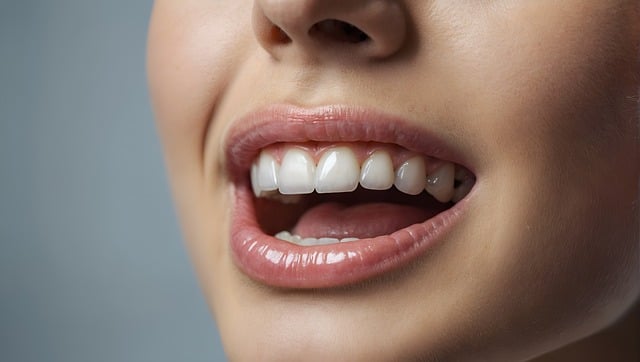Are you looking for Natural Ways to Whiten Your Teeth. Here is the safe and effective ways to brighten your smile without spending money on commercial teeth whitening products.
Perhaps you’ve heard baking soda can polish teeth or citrus fruits contain properties that lift stains.
If so, you’ll be glad to learn numerous natural remedies exists that can gradually lighten teeth when consistently applied.
This guide will cover several science-backed natural whitening methods that can be easily incorporated into a dental care routine.
We’ll explore how certain scrubs and everyday fruits contain properties that remove surface discoloration over time when used regularly. No more cringing every time you catch a glimpse of your reflection – with consistency and a little patience, your teeth can shine.
Table of Contents
- Natural Ways to Whiten Your Teeth?
- Whitening methods that do not work
- how to prevent tooth stains
- Conclusion on Natural Ways to Whiten Your Teeth
Natural Ways to Whiten Your Teeth?
In a world obsessed with flawless smiles, teeth whitening has become big business. While crest whitestrips and bleaching treatments work wonders, not all want to go the store-bought route.
Fortunately, Mother Nature provides several gentle whitening agents worthy of a bright grin. Harnessing natural ingredients found right in your kitchen lets you lighten safely and affordably without harsh chemicals.
With consistency, a tailored home regimen can lighten naturally over time.
Baking Soda Blitz
As one of the gentlest abrasives, baking soda’s slight buffing action removes surface stains while sodium bicarbonate’s alkaline pH counteracts acids that discolor.
For whiter chompers, stir a teaspoon into a paste with water and brush as usual, taking care not to over-scrub sensitive areas.
Those with fillings may opt to swish the slurry instead. Bonus: it also fights bad breath!
Coconut Oil Care
As a mild bleaching agent, the lauric acid in extra virgin coconut oil disrupts melanin responsible for teeth darkening.
Just mix a drop with baking soda, then brush, rinse and repeat 1-2x weekly. Its nutrients also aid gum health.
Consider swishing after indulging in staining sippers or snacks too. Those who dislike flavor can opt for toothpaste with natural cleansers.
Citrus Sparkle
With acids that gently exfoliate enamel, citrus fruits polish away years of built-up grime. Simply slice lemons, limes or oranges in half and rub surfaces before brushing.
Hold segments against teeth if sensitivity calls for an extra-gentle touch. Daily scrubbing perks up pearly whites while fighting plaque; diluted juice in a homemade mouthwash works too!
Strawberry Soft Scrub
Known for whitening properties, strawberries soften stains when eaten or when hulls act as eco-friendly “toothbrushes.”
Rub ripe berries’ outsides across teeth regularly for a tasty treat with skin-friendly malic acid sloughing off surface stains. Enjoy the pinkish tint as they work their magic!
With consistent use of these nourishing yet gentle ingredients and a commitment to prevention habits like avoiding staining pigments, a natural home routine safely illuminates smiles from within.
Monitor results and tailor remedies, taking comfort in kinder alternatives that let your true bright grin shine through naturally.
Whitening methods that do not work

The quest for a bright, dazzling smile drives many to try unconventional whitening methods promising quick fixes.
However, not all options actually remove stains or risk damaging delicate enamel. As appealing as instant solutions seem, some purported remedies provide false hope at best and health hazards at worst.
By understanding approaches proven ineffective or unsafe, consumers can avoid wasted time and sensitive teeth issues down the road. Let’s explore popular whitening myths that deserve debunking.
Toothpaste Promises Unfulfilled
While whitening toothpastes containing abrasives lightly polish, claims of dramatic transformations after just a few brushes are unrealistic.
Targeted stains require prolonged contact with active ingredients like hydrogen peroxide or carbamide peroxide. Regular paste maintains brightness between professional treatments but falls short for those seeking multiple shade improvements on its own. Always consult product directions.
Bleach Dangers
Household laundry or drain cleaning items containing chlorine should stay far from one’s mouth, as these concentrated bleaches pose oral injury risks.
Enamel and soft tissues cannot withstand such harsh chemical formulations.
Some seek faster whitening via direct application, but results come at the cost of damaged taste buds or burns. Your smile simply isn’t worth such hazardous shortcuts.
Flawed Fruit “Fixtures”
Myths spread of fruits like strawberries or lemons instantly whitening teeth through natural acids when rubbed directly on surfaces.
While these may lightly freshen breath, any notable lightening requires consistent daily scrubbing – not one-time magic.
Overzealous fruit rubbing also risks enamel erosion negating natural care benefits. Moderation is key.
Plaque Pick-Me-Ups
Contrary to old wives’ tales, brushing more vigorously or using overly abrasive tools doesn’t accelerate whitening by sanding away stains more quickly. Any small amount of surface removal also diminishes protective enamel, thinning it over time and worsening discoloration issues.
Gentle care emphasizing stain prevention outperforms forceful methods.
Lasers Lacking Proof
At-home light therapy or laser whitening devices of dubious scientific validity clutter aisles with unsubstantiated promises.
While in-office LED treatments show some promise assisting professionals, affordable consumer versions lack functionality, oversight and safety standards.
Your chompers deserve evidence-backed solutions, not empty claims. Caveat emptor!
When it comes to brightening smiles, diligence and patience prove more dependable than miracle cures.
Knowledge safeguards against misinformation allowing nature and science to work harmoniously toward a healthy glow overtime. With care and realistic expectations, consumer teeth regain their sparkle naturally.
how to prevent tooth stains
A bright, pearly smile exudes confidence and well-being. However, stains accumulate over years unless proactively protected against habitual culprits and behaviors.
Fortunately, consistent prevention strategies shield delicate enamel from invading pigments better than periodic bleaching touch-ups alone. Combining targeted cleanings with select dietary and lifestyle
modifications guards natural luster without fuss or cost. Let’s explore how adopting a few simple staples in daily routines can safeguard one’s natural grin for decades.
Brushing Basics
Thorough yet gentle twice-daily scrubbing after meals physically sweeps away surface debris before acids metabolize sugars into embedded stains
. Electric toothbrushes precisely navigate every nook while helping maintain healthy gums. For fresher breath between, chewing sugarless gum spurs saliva flow naturally washing away food particles.
An Alkaline Edge
Maintaining neutral PH levels counters acid attacks from dietary and microbial partners in staining crimes. Post-meal mouthwashes containing glycerin, hydrogen peroxide or activated charcoal neutralize remnants that otherwise linger promoting discoloration over time. Chewing sugarless gum boosts output between meals too.
Guilt-Free Grins
Certain intensely pigmented foods and beverages permanently imbue teeth, so moderating intake shields enamel.
Limiting wine, coffee, dark berries and spices to meal-brackets rather than snacking throughout days reduces constant bombardments
Rinsing thoroughly afterwards further ensures colorants don’t linger wreaking havoc.
Smile Shields
Straws, cups and napkins form physical barriers preventing lips’ contact with staining culprits which can otherwise daub surfaces before rinsing away.
When partaking straight from containers isn’t possible, sipping through breath-freshening tools shields teeth from errant splashes and spills.
While occasional indulgences prove enjoyable, diligence guarding against habitual discoloration intruders through lifestyle and care modifications maintains nature’s bright work for life.
Adopting a few prevention pillars customized for individual risks forms layers blocking stains at their source before damage sets in. Shining grins remain attainable through simple yet consistent vigilance.
Conclusion on Natural Ways to Whiten Your Teeth
There are a variety of effective natural methods that can be used to gradually whiten teeth at home over time.
Using gentle abrasives like baking soda, coconut oil, and citrus fruits takes advantage of their natural bleaching and exfoliating properties to lift surface stains.
Incorporating these into a regular oral care routine along with practices such as tongue scraping and flossing helps prevent new stains from forming.
With consistency, a tailored regimen can boost a smile’s brightness without harsh chemicals or expensive treatments.
The keys are patience, selecting mildwhitening agents, and preventative daily habits to maintain results naturally. With some trial and error, one can discover the ideal natural whitening techniques.


5 thoughts on “Natural Ways to Whiten Your Teeth | Revealed”